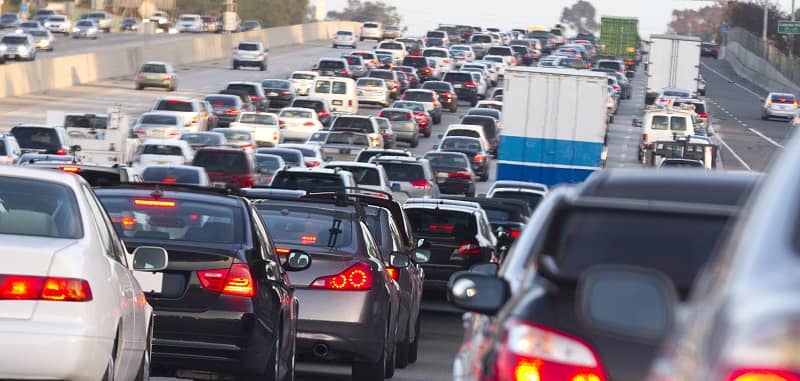
The Myth of Induced Demand
Did you know that, at one point, there were multiple other freeways planned for the Portland metropolitan area? It’s true. If the transportation systems envisioned in past decades had materialized, the freeway system would operate in more of a loop than it does now and would have more of a flow to it.
So what happened? Powerful special interests became involved. Those plans were scuttled, and resources originally intended to go towards expanding capacity instead went to an expensive, experimental light rail system.
And how’s that working out for us? We’ve had ample time to see if those decisions were the right ones to make. All indications are that they were not.
The region’s population has grown exponentially throughout the past few decades. But in that time, road capacity has not increased whatsoever. The result is that rush hour has become longer and longer in the morning and early evening. Worse yet, ridership on public transit light rail systems has been in continual decline. For as much taxpayer dollars that have been invested in it, the average person around here isn’t getting much of a return.
These same conversations have been going on for years. Every time it’s suggested that adding capacity may be a way to relieve congestion, those same powerful special interests mount their typical counterattack. Their solution is the same as it’s always been—give us billions of dollars of other peoples’ money, we’ll add some more light rail lines, and everyone will use them. That sentiment is just as false now as it was when it was first used to halt freeway projects late last century.
The main excuse given by road capacity opponents takes the form of “induced demand.” It basically states that, if you do add more roads, it won’t relieve congestion because people will start using those new roads.
Can you imagine using that argument for literally any other piece of public infrastructure? Picture a small city refusing to build a new sewer or wastewater plant on the sole grounds that it will someday be used by members of the taxpaying public. Envision, if you will, a school district adamantly insisting that it cannot construct a new school because students will go to it, as it was intended. Those public officials would be laughed out of the room, at the very least, and more likely forcefully removed from office, for good reason.
Somehow, this concept of induced demand doesn’t apply when it comes to these billion-dollar light rail boondoggles. How is it not induced demand if you’re spending huge piles of money on something in hopes that the public may someday use it? I suppose it’s because time has demonstrated relatively little demand for this service from the average person funding these projects.
At the end of the day, there are reasons people associate the personal automobile with freedom. Having a car enables you to come and go as you please. That mobility also makes it harder for other people to control your movements.
The transportation problems that plague this region are the result of generations of deliberate policy decisions that were based on attempted social engineering rather than consumer demand. They have failed and will continue to fail. Doing more of the same—refusing to build more roads or add capacity—is going to have the same exact results. I just wonder how much worse our traffic congestion will get before people start to realize that we’ve been sold a bill of goods.
Induced demand is absolute nonsense, and nothing more than a myth that is being proven wrong every day on our crowded highways, freeways and streets.

I want to know what the $60 fee for vehicle tags in Clackamas county is going for. We didn’t vote on it I’m sure and who is accountable
Marilyn
You are correct in that you didn’t get a chance to vote for the VRF. That action came from a prior commission. When I became chair, I put forward a motion to remove the VRF. I was voted down by my commission 2-3, with Commissioner Shull and myself voting for it.
The $60 is for county roads.
Thanks for reaching out
Tootie Smith